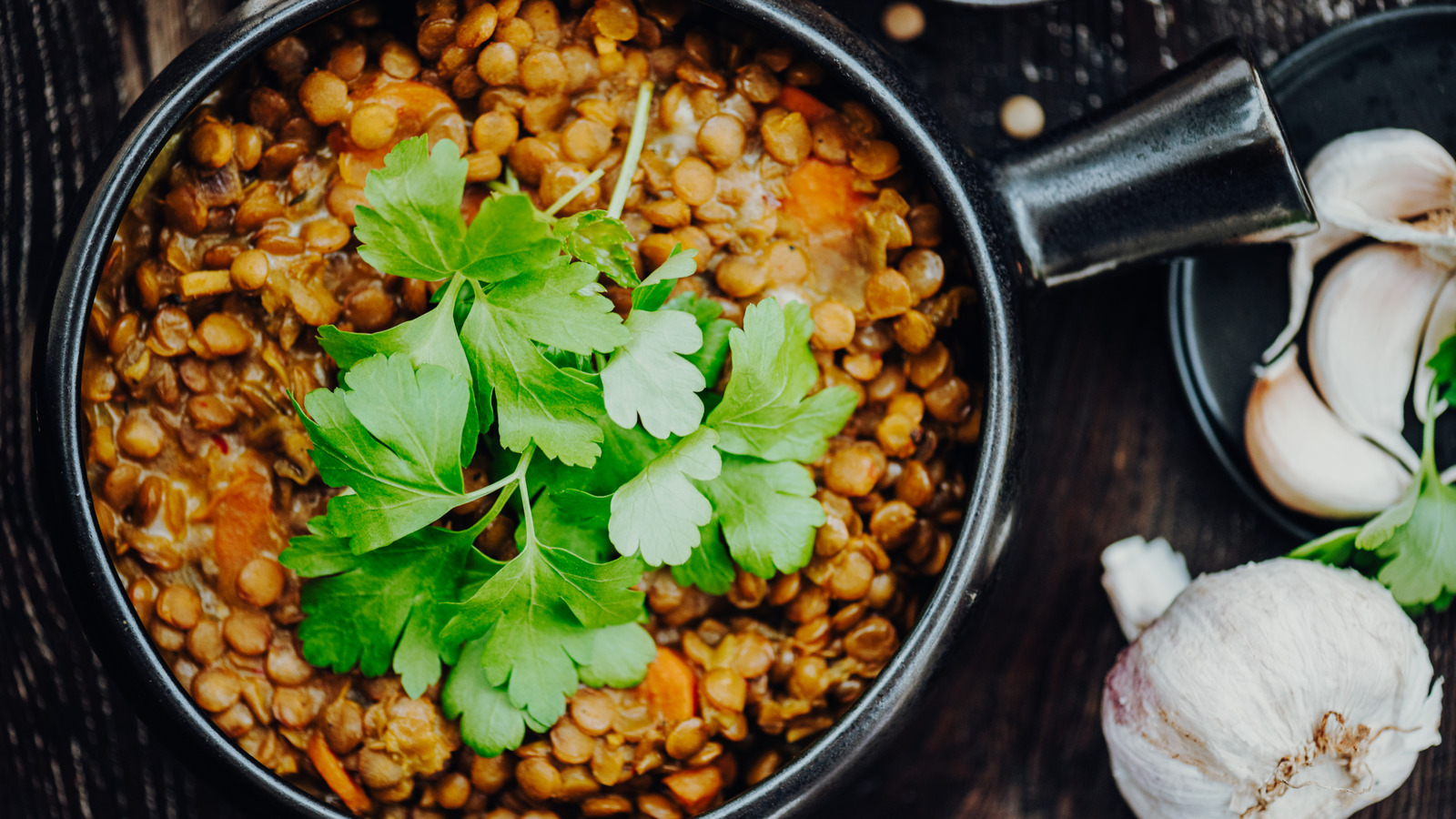We may receive a commission on purchases made from links.
We’ve written about seven different types of lentils you can buy dried, but canned lentils are a modern miracle of convenience for home cooks. More recently, we consulted an expert to guide us through when to use canned versus dried lentils and the best way to prep each. Abishek Sharma is the chef and restaurateur of Madam Ji Ki Shaadi in New York City where customers can enjoy a nightly tasting menu, the Shaadi Tasting Menu, inspired by Indian weddings.
Chef Sharma told us that the advantages of cooking with dry lentils far outweigh the drawbacks. “While they require a long soak before cooking (which takes long, too), you have more control over the final texture and flavor and they don’t have any added preservatives,” he said. “Plus, dried lentils are typically cheaper per serving compared to canned lentils.”
If you’re looking for a cheaper whole ingredient that is much more customizable, dried lentils are ideal, and as Sharma explained, they are “best for slow-cooked dishes where they absorb flavors better, such as stews, curries, and dals.” Try our recipes for dal, like this healthy moong dal or this vegan sweet potato dal. This creamy lentil curry calls for dry red lentils while this black lentil soup with tadka or this cabbage and lentil curry soup are essentially stewed curries.
Unlike dried lentils, their canned counterparts have the benefit of being major time savers. “Canned lentils are great for their convenience, as they are ready to use and don’t require soaking or a long cooking time,” Sharma said. “However, that means they can be mushy and can often contain added salt and preservatives.” We supply ways to use canned lentils that can help you avoid a mushy consistency. There are also salt-free and preservative-free options like these Westbrae Natural no-salt organic lentils and preservative-free Fillo’s Peruvian lentils. Chef Sharma recommends using canned lentils for “quick salads, dips, and last-minute meals like a fast dal or lentil soup. ”
Best practices for cooking with dried lentils
If you’re willing to put in the time, preparing dried lentils has a big payoff. And Sharma shared some key tips for the best results. “To prepare dried lentils, the most important things to remember are to rinse them well to remove any debris, to use a 1:3 lentil-to-water ratio when cooking, and simmer gently to avoid a mushy final texture,” he said. Even if you buy lentils in a bag at the grocery store instead of an open bin at a market, they’ll contain unwanted particles like dirt, sticks, or small rocks which you don’t want to bite into. So, not sifting through your lentils is a mistake to avoid; you can rinse them with a metal strainer for best results.
The 1-to-3 lentil-to-water ratio ensures that the lentils will still be submerged in liquid even as they expand with the absorption of water. Plan on using a much larger pot than you’d expect to accommodate the lentils, cooking liquid, and any other additional ingredients like veggies, aromatics, or a splash of coconut cream for a decadent finish.
Dried lentils take longer to prepare than simply opening up a can, but they’re still small enough to cook relatively quickly compared to most types of beans. And when it comes to soaking lentils, Sharma advised that it’s optional but nonetheless recommended to cut down on cooking time. We agree that soaking can cut lentil cooking times in half and help remove the components that might contribute to indigestion.
How to make canned lentils shine
While some canned lentils are pre-seasoned and sauced, most of them are canned in a simple brine. And, if you’re incorporating canned lentils into more elaborate recipes, the shorter the ingredient list, the better. Similar to a can of beans, the canning liquid for lentils is best left out of the equation. To that effect, Chef Sharma’s prep tips start with ridding them of that salty brine. “For canned lentils, drain and rinse them to remove any excess salt and a metallic taste that may come from the can,” he advised. “If you’re roasting or adding them to a salad, pat them dry beforehand to get rid of any excess moisture.”
Getting rid of excess moisture will also help canned lentils absorb seasonings or salad dressings you’ll toss them with. After rinsing them in a strainer, you can lay them out in a single layer over a cutting board covered in paper towels, place another layer of paper towels on top, and lightly pat them. You can use the paper towels underneath them to help transfer them to a baking dish if you’re roasting them. Roasted lentils make excellent crispy, savory garnishes to top soup or salad. You could also use them instead of cooked lentils for a crunchy contrast to the famous Egyptian dish koshary. A can of drained and dried brown lentils would be the perfect foundation for this roasted eggplant and lentil salad.







